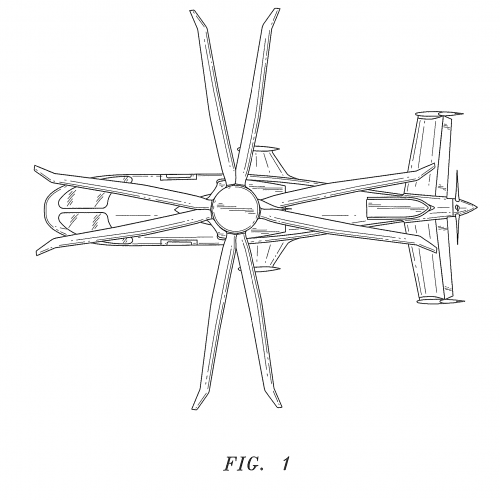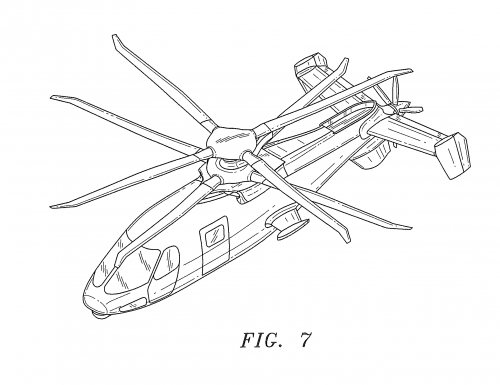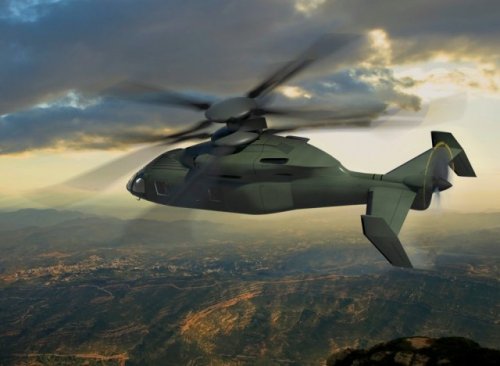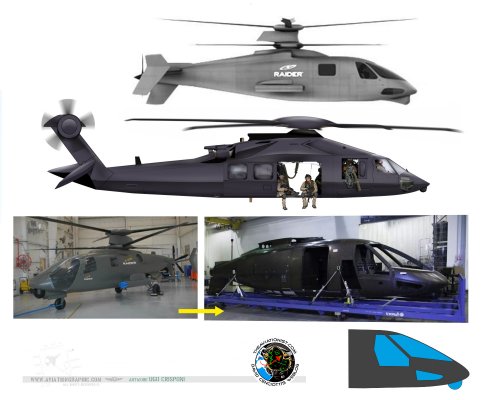WASHINGTON — Sikorsky will begin final assembly of its S-97 Raider helicopter prototype this week, according to company officials.
That puts the helicopter manufacturer — which is competing for the Army’s Armed Aerial Scout program — on track for a first flight at the end of 2014.
“It’s just a really exciting foundational milestone for us, and it’s great to be leaving the design phase of Raider and getting into the build phase,” Chris Van Buiten, Sikorsky Innovations vice president, said.
The Raider is based on the X-2 technology developed by Sikorsky in the late 2000s, but grows the size and weight significantly. Where the X-2 demonstrator was a one-person, 5,000-pound platform, the Raider will be roughly 11,000 pounds with room for six troops in its combat assault mode. In reconnaissance mode, that space could be used for extra equipment or ammunition.
Despite that growth, Sikorsky executives are confident the design will bring a mix of speed and maneuverability that helicopters have not yet achieved.
“This thing has to fly faster than 220 knots” at cruising speed, Van Buiten said when asked about key performance targets. “It has got to do more than a 3G turn at speed. It has to demonstrate hover at 10,000 feet and 95 degrees. Those are the non-negotiables.”
The fuselage, assembled by Aurora Flight Sciences in a West Virginia facility, arrived at Sikorsky’s West Palm Beach, Fla., facility Sept. 20. A composite airframe, the fuselage has been tested to tolerate bird strikes at 230 knots and has shown very low drag, according to the company.
The Armed Aerial Scout program aims to replace the Army’s fleet of OH-58 Kiowa Warriors, in use since the late 1960s. The winner of the program is expected to last well past 2050, meaning the competition would be a long-term windfall for the winner.
Army officials visited with competitors AgustaWestland, Boeing, EADS and Bell Helicopter during the summer of 2012, but the top acquisition adviser to the secretary of the Army told a congressional hearing in May that “we didn’t find a single aircraft that was out there that could meet the Army’s requirements.”
Sikorsky is confident is can fill that role — assuming the replacement program can get funding.
As with all programs in the Pentagon, the Armed Aerial Scout is facing budget challenges. Speaking Sept. 19 on the Hill, Army Chief of Staff Gen. Ray Odierno indicated the program is at risk if sequestration continues.
“In the event sequestration-level discretionary caps continue into FY14, we will assume significant risk in our combat vehicle development,” Odierno said. “In our aviation program, we cannot afford to procure a new Armed Aerial Scout program and we will be forced to reduce the production and modernization of 25 helicopters.”
Despite such warnings, Sikorsky remains confident the Army will find the money to fund the program, according to Steve Engebretson, the company’s Advanced Military Programs director.
“It’s a tough financial environment, but the fact Odierno highlighted this program reflects the level of importance the Army has in that mission,” he said. “To me, it’s at least a sign that if there is a way the Army can get that program going, they will find a way to do that.”
“We understand the climate we’re operating in,” added Van Buiten. “We’re committed to demonstrating this technology, but we understand the customer has a lot of priorities to balance. Our job is to open up the aperture of what’s possible with them.”
Both men can be sanguine, in part, because the development of the Raider has been entirely funded by Sikorsky and its industry partners. While the S-97 is being designed with Armed Aerial Scout in mind, it will also serve as a test bed for further X-2 technologies, which could then go onto future Sikorsky products. Additionally, the company sees the Raider as a demonstrator for a larger machine that would fit the Army’s Joint Multi-Role helicopter replacement program for the service’s Blackhawk fleet.
In other words, the company sees ways to recoup its investment in the prototype even if the program never comes through. That company investment is a point of pride for Van Buiten, whose team was responsible for the design and creation of the Raider.
“We’ve created this innovations group, and one of our charters is to demonstrate differentiating technology that creates competitive advantages for us or all new capability for our customers,” he said. “We don’t have the luxury of using traditional timelines and budgets to do it.”
If the project continues on target, the Raider prototype’s first flight will take place roughly 48 months after its clean-sheet design, a much faster pace than the defense industry normally sees. While costs are not set, the company has estimated it could produce the platform in production quantities for as little as $15 million a copy, including mission system packages.
There is also a potential international market for the technology through the Foreign Military Sales program. The company has been in contact with “several very close allies of the US” about the technology, Engebretson said.
While declining to name which countries might be interested, he said the “international interest roughly equals the quantities the U.S. government is thinking about, in the hundreds.”










